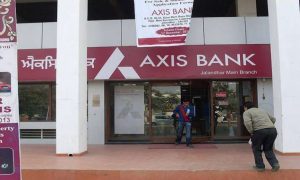Fixed deposits (FDs) are a popular investment option, offering guaranteed returns and safety for your money. But with numerous banks and financial institutions offering FD schemes, choosing the right one can be challenging at times. Choosing the right bank for opening a fixed deposit (FD) account involves a thorough evaluation of various factors to ensure you get the best returns with optimal security.
Read More: RBL Bank savings account interest rates CHANGED! See details
Often it is seen that people only know about one type of fixed deposit product where they have lumpsum amount to deposit for a particular time period and earn returns on it. On the other hand, there are several options available in FDs, but they vary from institutions to institutions.
Here’s a guide to help you in the decision-making when it comes to opening your FD account.
Factors to Consider When Choosing a Bank
* Interest Rates
Compare the interest rates offered by different banks. Public sector banks, private banks, and small finance banks may offer varying rates. Small finance banks often provide higher interest rates compared to traditional banks.
* Rising FD Rates
In recent times, FD rates have been on the rise. Recently, and in the past few months, some banks like SBI, Axis, Bank of Baroda and Union Bank have announced hikes in FD interest rates. Banks adjust FD rates based on changes in the Reserve Bank of India’s (RBI) repo rate, inflation, and overall economic conditions. As of 2024, some banks have increased their FD rates, offering better returns to attract more customers. This trend is beneficial for investors seeking stable and secure returns.
* Bank and Tenure
Opt for banks with high credit ratings and a solid reputation. This ensures the safety of your investment. Look for banks offering flexible tenure options ranging from a few days to several years. This allows you to choose a duration that aligns with your financial goals.
Adhil Shetty, CEO, Bankbazaar.com, says, “When choosing a bank for opening an FD account, consider factors such as interest rates, tenure options, and premature withdrawal terms. Stay informed about rising FD rates to maximize your returns. Depending on your investment horizon, you can also explore short-term FDs, special FDs, and company Fds.”
* Premature Withdrawal and Other Benefits
Check the terms for premature withdrawal, including any penalties. This is crucial if you need access to your funds before maturity. Some banks offer extra benefits like sweep-in facilities, loans against FDs, and higher rates for senior citizens. Consider these perks while making your decision.
Short-Term FDs
Short-term FDs are those with tenures ranging from 7 days to 1 year. They are ideal for investors looking to park their funds for a brief period while earning better returns than a regular savings account. Short-term FDs offer flexibility and are suitable for meeting immediate financial goals or emergencies.
Special FDs
Special FDs refer to fixed deposit schemes that banks introduce for specific durations or occasions. These might offer higher interest rates for particular tenure periods, such as 444 days or 999 days, or during festive seasons to attract more deposits. Investors can benefit from these schemes by locking in higher rates for a specified period.
Company FDs
Company FDs are fixed deposit schemes offered by non-banking financial companies (NBFCs) and corporations. They often provide higher interest rates compared to bank FDs but come with higher risks. It’s crucial to evaluate the company’s financial health, credit rating, and repayment history before investing in company FDs. Unlike bank deposits, company FDs are not insured by the Deposit Insurance and Credit Guarantee Corporation (DICGC).
Laddering Strategy
FD laddering is a strategy where you divide a large sum into smaller FDs with varying maturities. Instead of investing the entire amount in a single FD, you spread it across multiple FDs with different terms, such as 1 year, 2 years, and 3 years. As each FD matures, you reinvest the principal and interest in a new FD with the longest term you initially chose.
Shetty explains, “It helps you benefit from changing interest rates. If rates rise, you can reinvest matured FDs at higher rates, potentially increasing your overall returns. Conversely, if rates fall, only a portion of your money is affected, as the longer-term FDs were locked in at higher rates earlier.”
This method ensures you benefit from higher interest rates over time, provides liquidity at regular intervals, and reduces the risk of being locked into a single rate for a long period. These tips will help you grow your money by a much higher amount than you would earn by applying a simple deposit strategy. Make use of these tips and get the best out of your investment.





































